It has been a long time (2-1/2 years) coming, but what I envisioned when I first laid eyes on this property is finally becoming reality! From what was a dense tangle of weeds, rocks and trash of all kinds left over from previous owners, is emerging a genuine TOMATO PATCH!
Dimensions are about 100′ X 50′, partitioned into 8 double rows (16 rows total), with 2′ spacing of tomato plants along rows, 2′ spacing between plants with paired row, and 4′ spacing for walking paths. This works out to 800 tomato plants in the entire tomato patch. Actually, I decided to leave a bit of walking space at the end of the rows, leaving 99 plants per row and 784 total plants.
Why double rows? Two main reasons: 1) Cut the number of support structures needed in half; 2) Drip hoses need to be installed in closed loops to help equalize water pressure at each emitter.
It was hard to bite the bullet and hire a backhoe, but it was a very good, encouraging day when a machine did, in one hour, what would have taken me two months to do by hand. And that’s assuming I could find the time, energy and motivation. A recurring insight of late:
“If you are doing the work that a machine can do, you can expect to get paid what the machine gets paid.”
Of course, this applies to other technology as well, such as weed barrier fabric. Weeds have been the bane of my existence for the past 12 years…
The following photo gallery chronicles the transformation process from a mess to a real tomato patch. Regrettably, as of this writing (June 30, 2022), only 6 of 16 rows have been transplanted, with rows 7 and 8 ready to be transplanted first thing in the morning. [Editing and Reordering of these photos is a work in progress – too sleepy at the moment…]

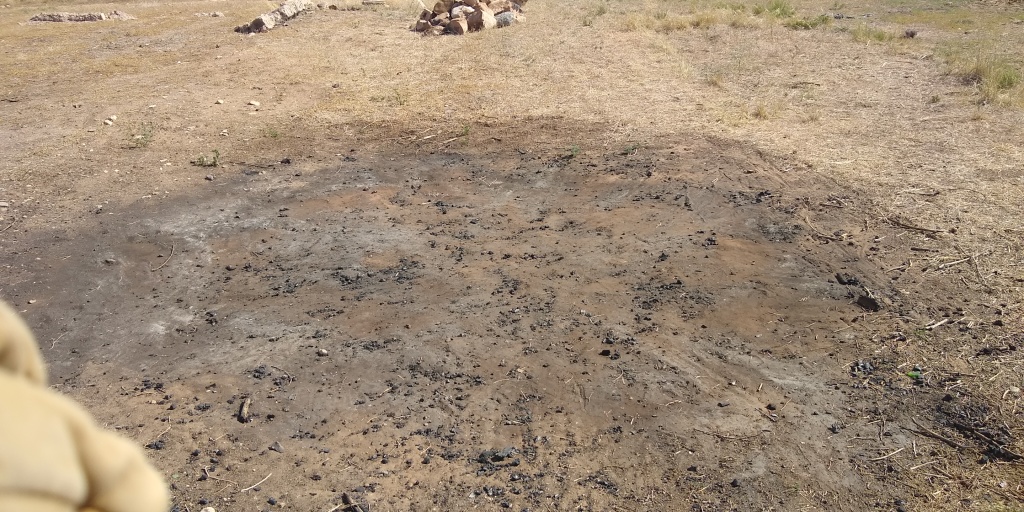





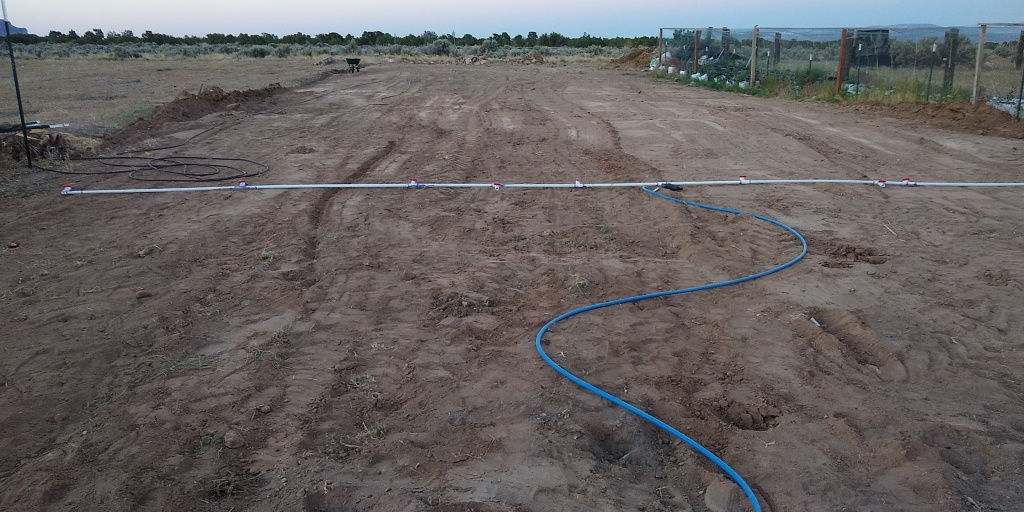




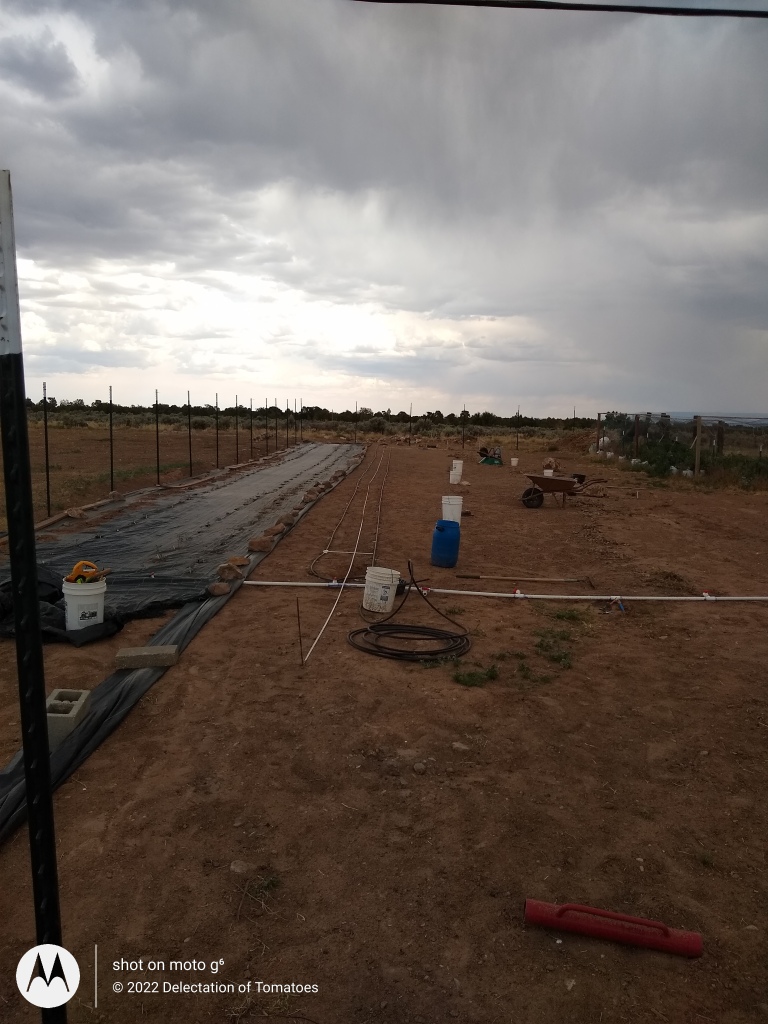
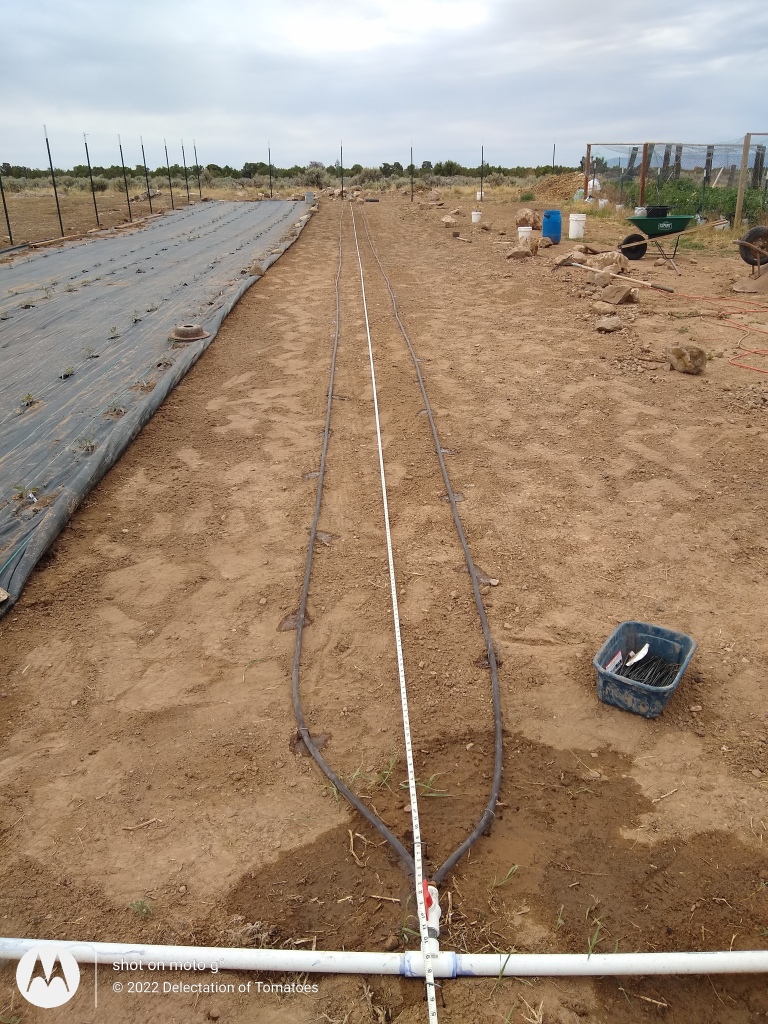







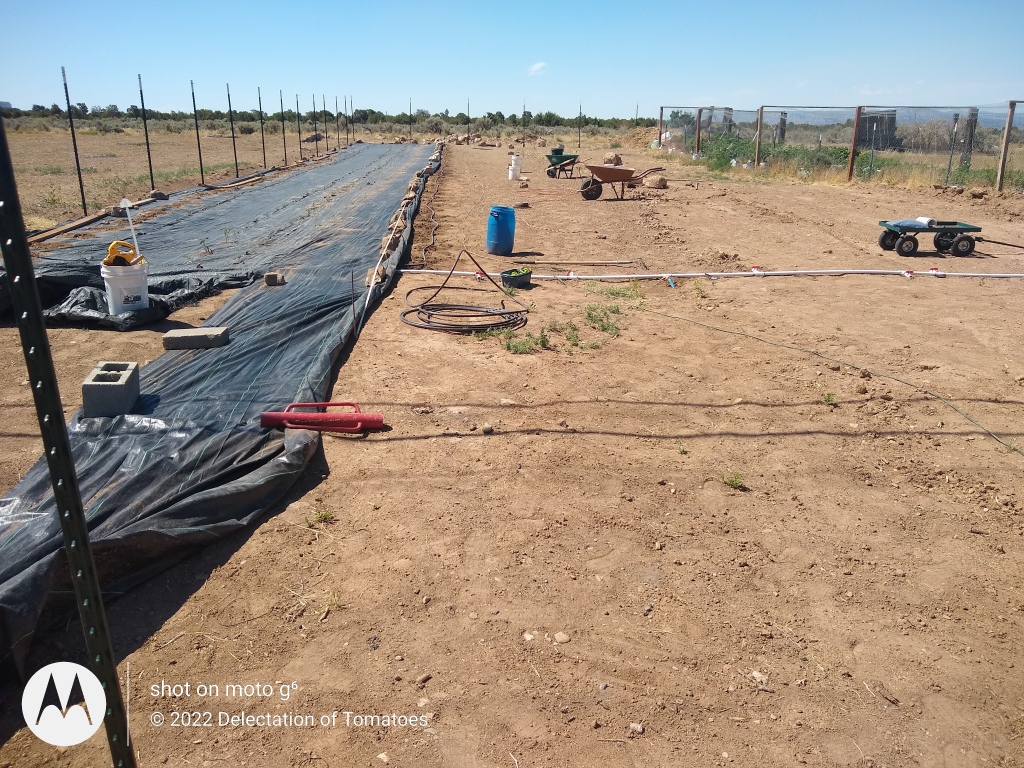
















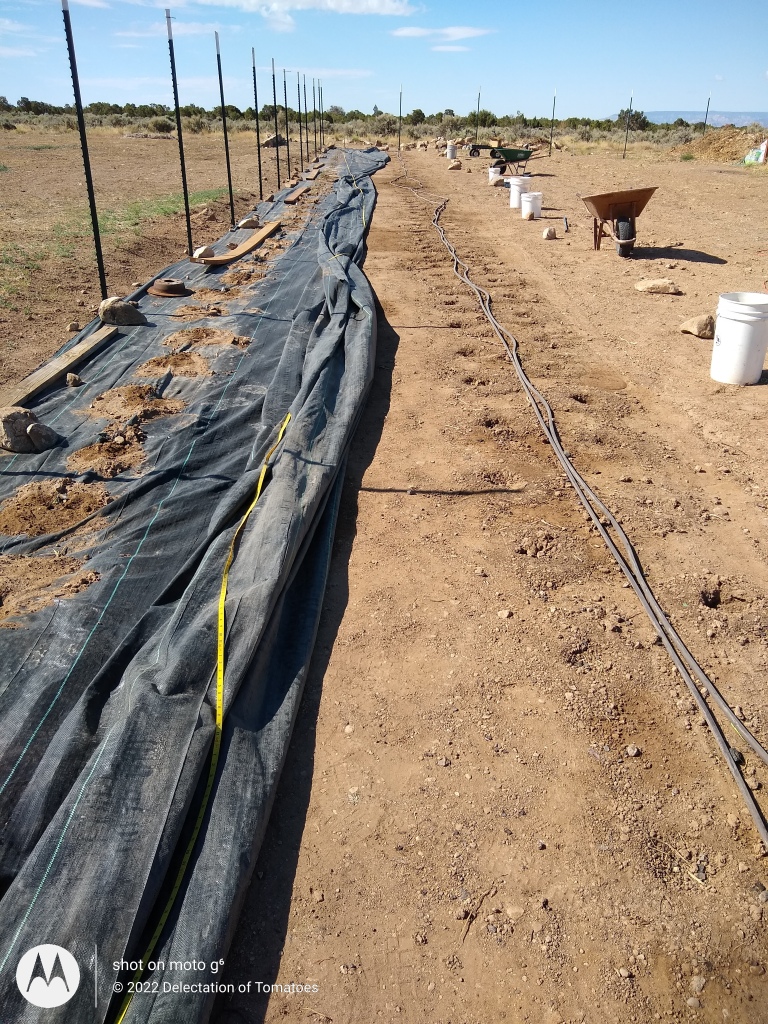
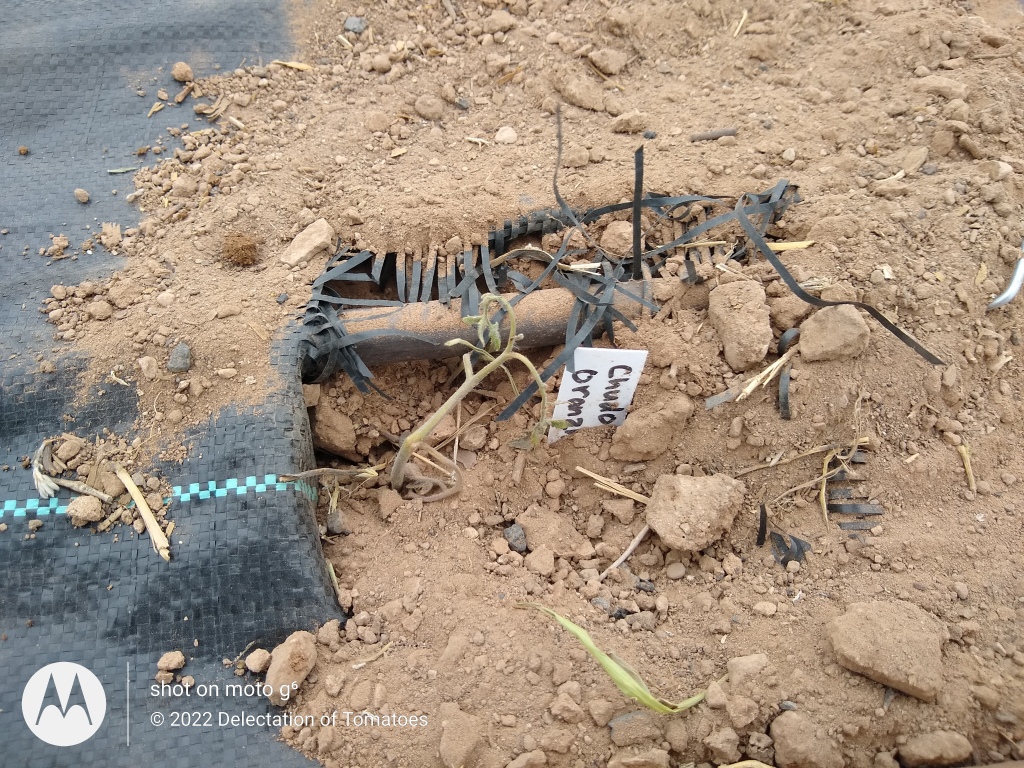
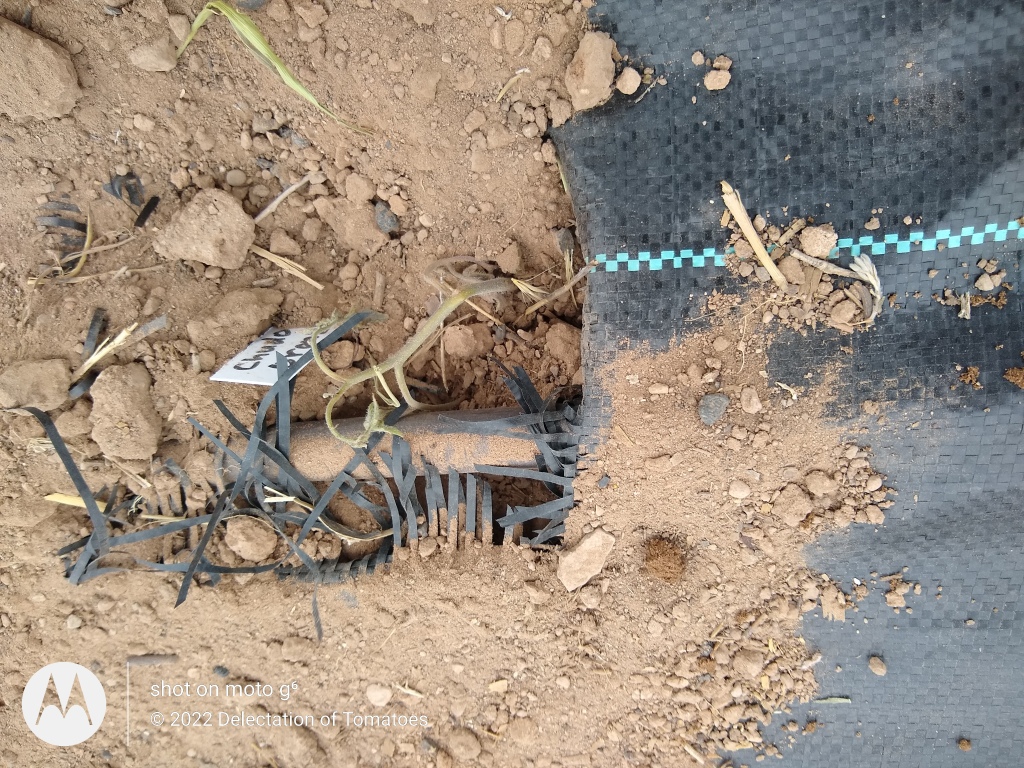









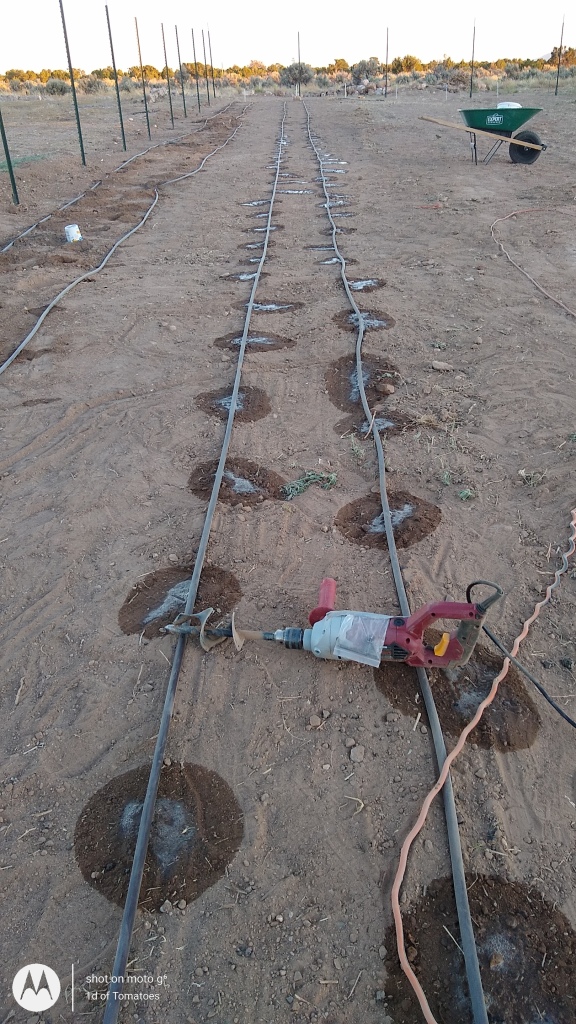
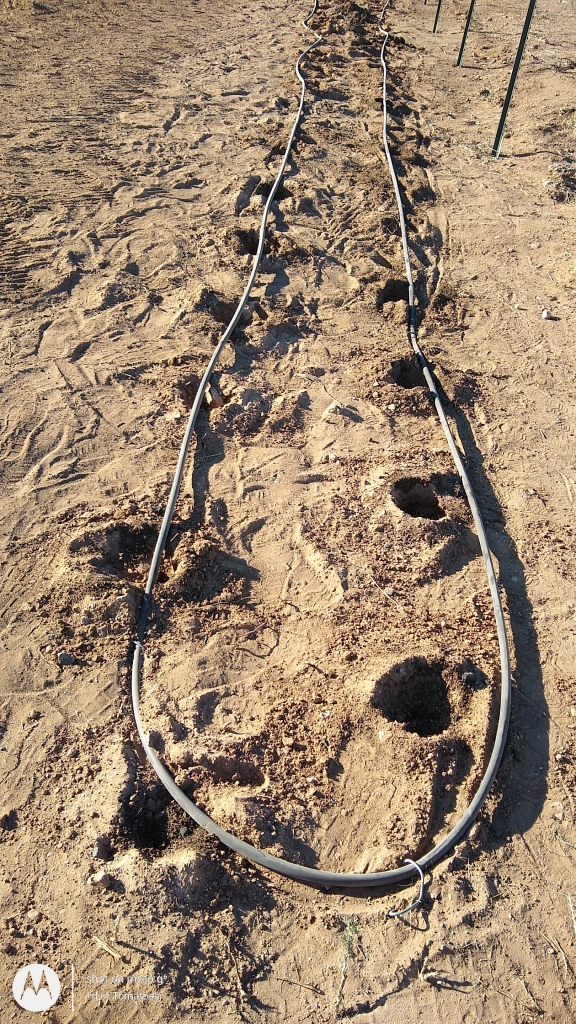


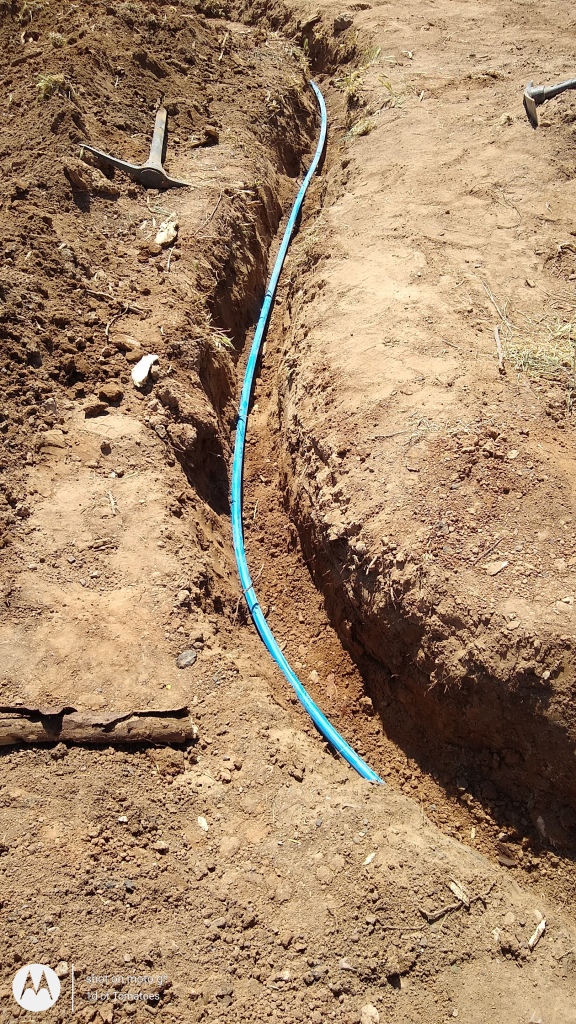
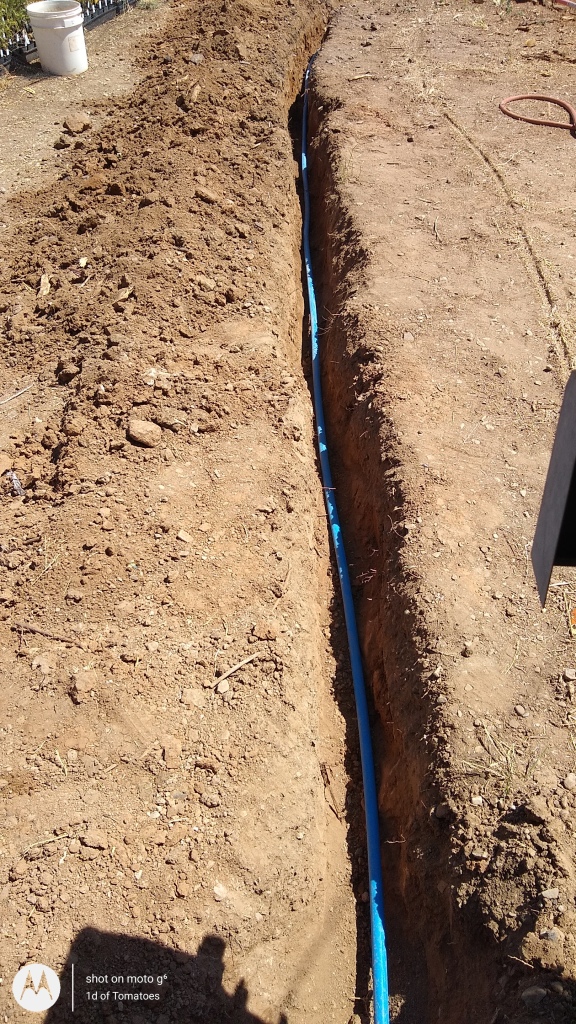

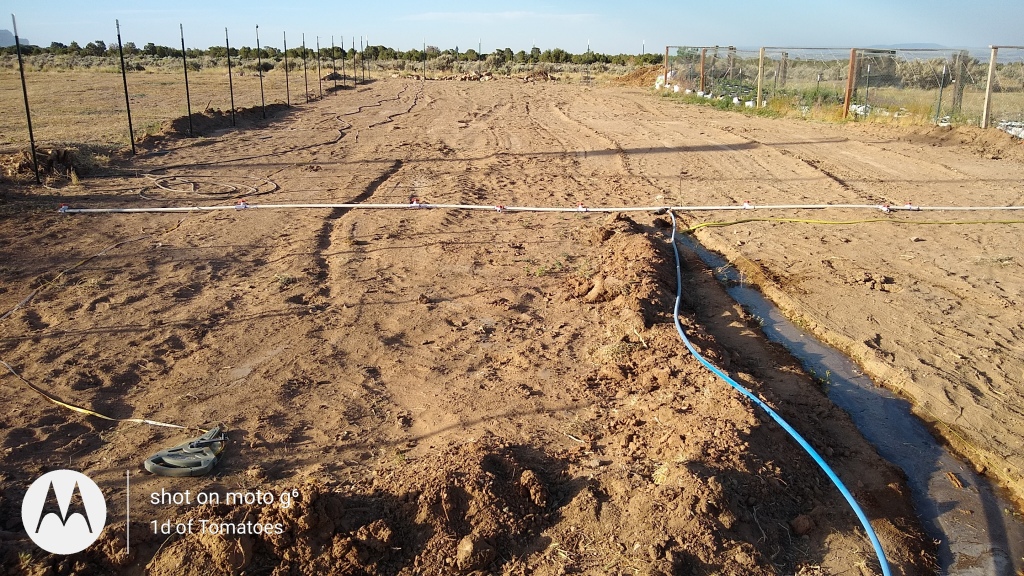

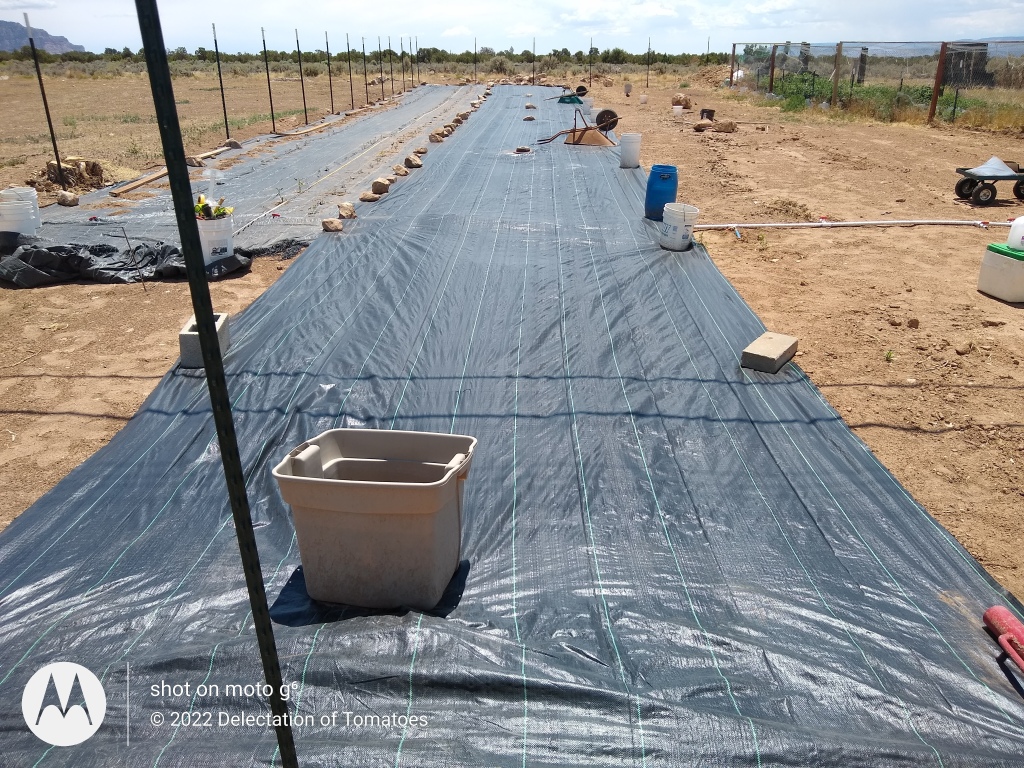
Not surprisingly, even after to awesome work done with the backhoe, many rocks still remained, requiring significant effort to remove. In a few cases, I decided to leave the very big rocks in place and try to work around them. For example, using a pickaxe to carve out a hole in a boulder into which I could place soil and a tomato seedling. No ideal, but there is the matter of time and energy.
A very big obstacle from the first day of transplanting (June 17th) was very high winds – a windstorm that lasted for nearly 3 days, with gusts in the 60 mph range, enough to blow over the wagon, wheelbarrow, buckets, trays of seedlings – and of course turn the brand new weed barrier fabric into a kite, of sorts.
Many tomato seedlings were damaged, at least 6 died outright, and it took one week to get the first row of 50 planted. It has taken 6 days more days to get the next 5 rows planted.
The solution I prefer is a 6″ layer of woodchips on top of the weed barrier. Alas, for 6,000 square feet, that comes to 111 cubic yards, or at least ten dump trucks filled to the brim. Even if I could locate and afford such a huge quantity of wood chips, where would I find the time and energy to spready them out?
As shown in above photos, I’ve learned that landscape staples are mandatory. So far, I’ve used about 600 of 1,500 stapes purchased, two for each plant.
At one point, I got caught right in the middle of a dust devil for about 20 seconds, with tumbleweeds whipping around and dust forcing me to close my eyes! Not surprisingly, I did not manage to get a video of that experience.
Some numbers from the 2022 tomato seed planting effort:
913 total varieties planted
692 varieties exclusively for seed production (2,786 seeds)
249 varieties for seedlings to share with other growers
221 varieties exclusively for other growers
38 varieties grown both for seed production and other growers
Inventory is not complete at this point, but I estimate that seeds of about 40 varieties never germinated, or all seedlings died before I was able to get them transplanted.
There was 15-day delay (June 2nd to June 17th) between completion of transplanting into pots and growbags in the deer exclosure, and the beginning of transplanting into the new tomato patch. The difference in the seedlings planted on these two days is quite remarkable.
Shown below is a young plant of the variety “Chernomorskiy”, planted from seed on April 21st, and transplanted directly from plug tray into grow bag on June 2nd. Compare this to Cherokee Lemon, then very next one in line (yes, I plant alphabetically), from the same plug tray, not transplanted until June 17th.



[More to be added]
= = = = = = = = = =
Update July 07, 2022
At 3:40 p.m., I finally transplanted the last tomato seedling into the main tomato patch. That’s about 800 seedlings of over 400 varieties, 2-3 seedlings per variety, except only one when that was all that was available.
I got some great help on these last 8 rows – thanks to those who devoted their time, talent, and energy to make this happen! I well imagine that next year, with this infrastructure in place, transplanting will go MUCH faster!

So far, deer and other critters have destroyed about 30 of the young transplants. Deer fencing just put up, loosely, in the dark.
Tomato hornworms and Curly Top virus are also taking a toll. Very good production from the lettuce variety Yedikule, kale variety Blue Groniger, and basil variety Mammoth.
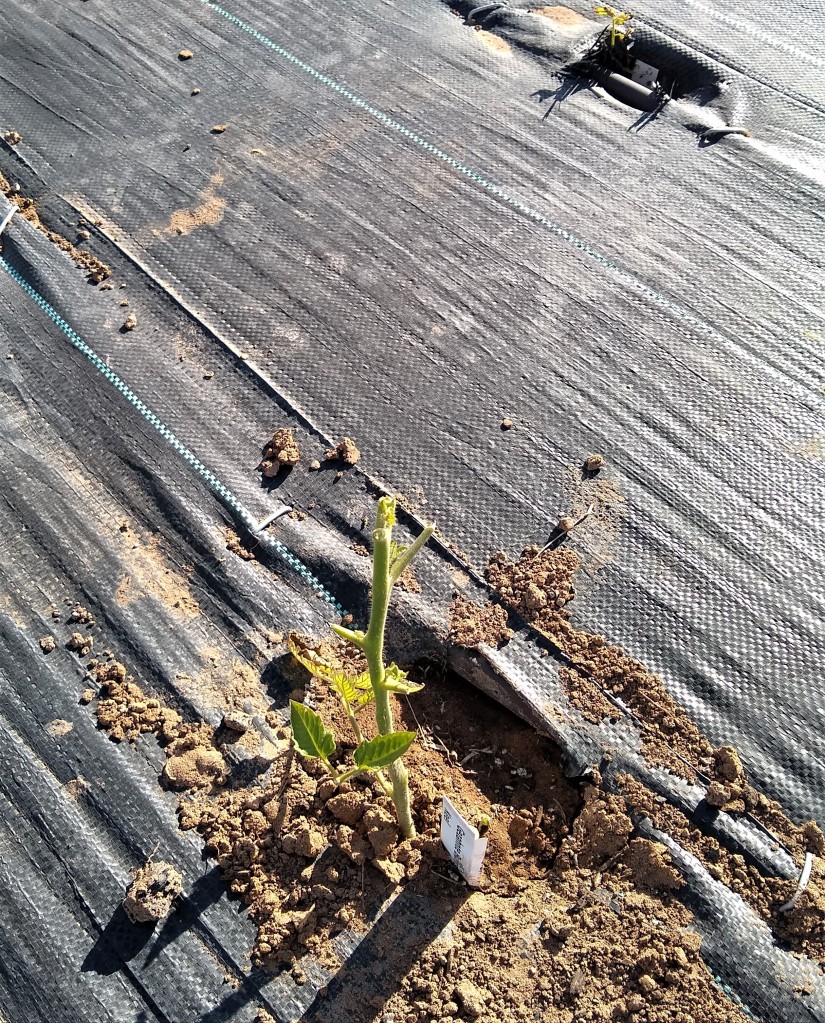




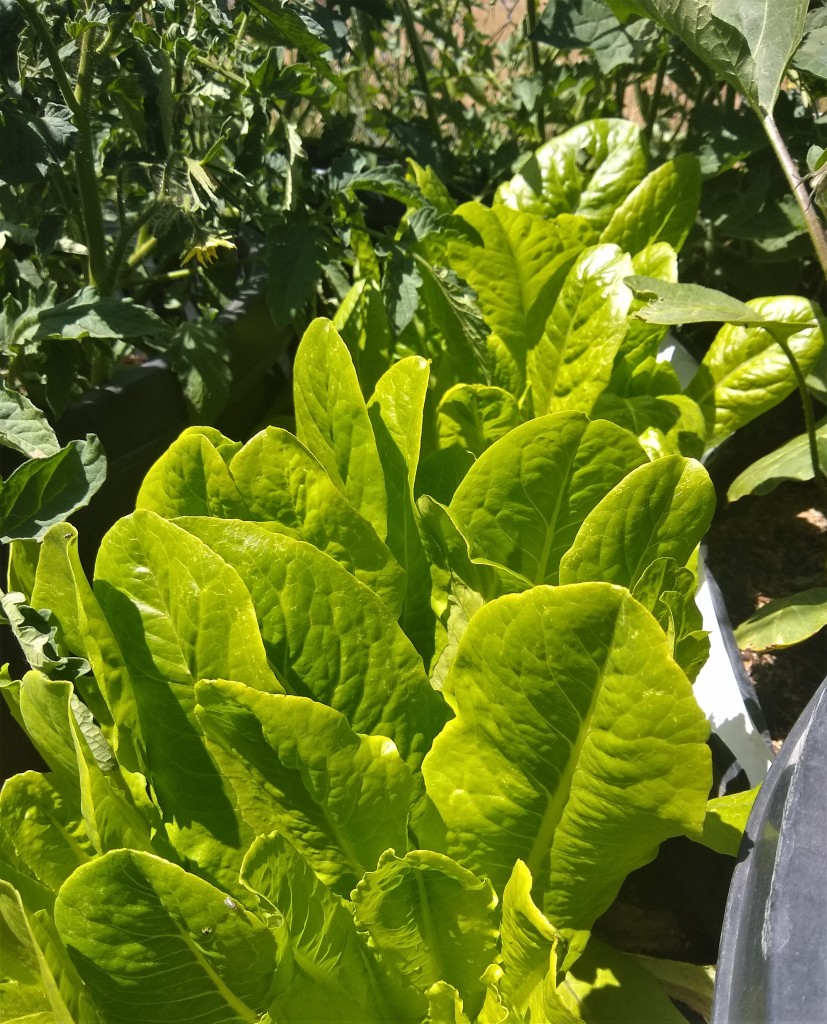
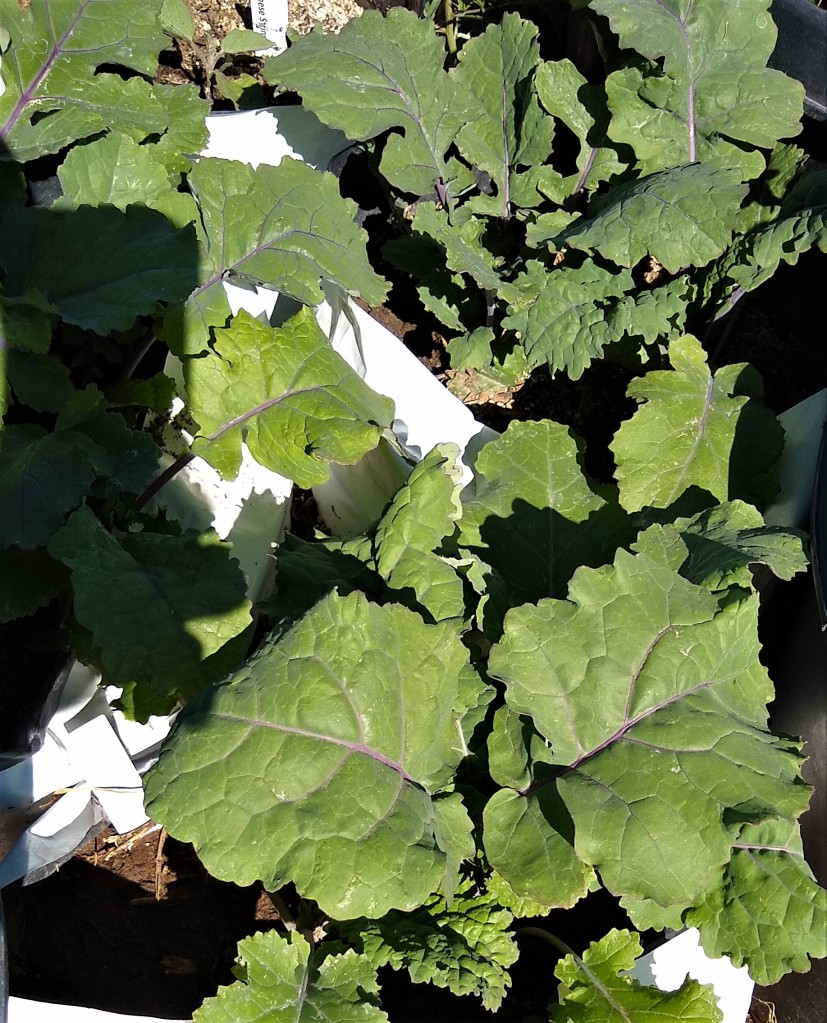

And, despite the very intense and exhausting work of late, it’s impossible to ignore the wonders of nature, such as this impressive double rainbow that accompanied some significant flash flooding south of here.

